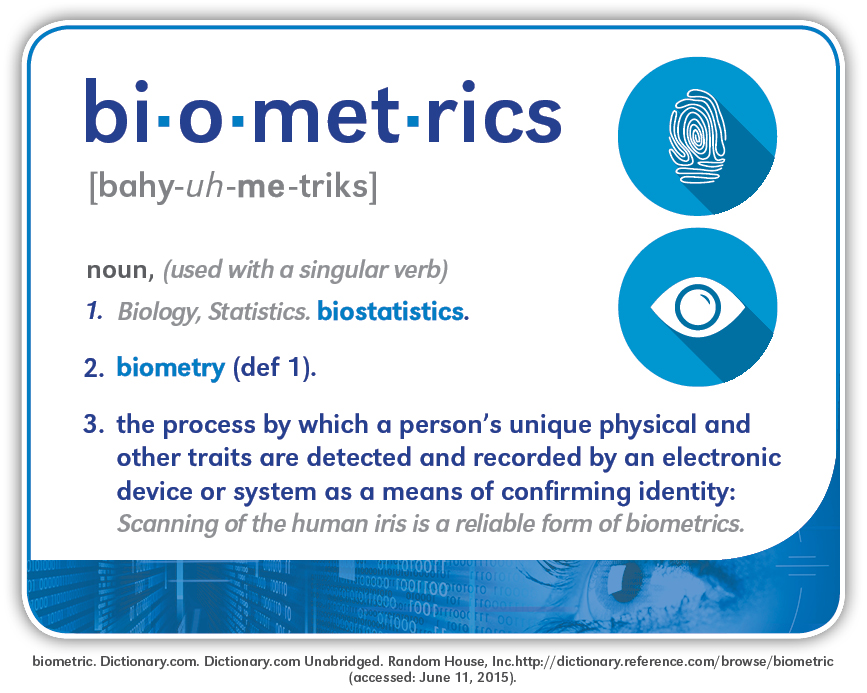Biometric Time Clocks and Why You Should Care

Think time and attendance is boring? We are out to change your minds today with a primer on biometrics and how they play a huge part in the time and attendance industry.
What are biometrics? The term “biometrics” applies to the measurement of unique physical attributes, for example your fingerprint, veins in your palm, topography of your hand or the shape of your face. All are items that are unique to you and impossible to replicate. The use of biometrics and the workplace join together in the time clock hardware and access control devices employers can use.
In the world of time and attendance, biometrics are used to prove identity. Biometrically enabled time clock and access control devices typically capture your biometric data and convert it into a mathematical string. In the case of our popular handpunch clocks, when you have your hand on the clock platen over 90 measurements are made of your hand and converted into a template. This template is based on the size and shape of your hand, the “topography”, not your palm print or finger prints. After initial set up, biometric devices can quickly scan and confirm employee data with a low fail rate. Most biometric devices require contact with the device to read your biometric measurements – something that is unique to “each individual” i.e. palm down so that infrared light can pass over and “read” your hand vein patterns. Our Facial Biometric technology uses no touch, just camera scanners that are used to measure multiple points of your facial structure.
Employers can use these identifying biometric measurements to stop the use of “buddy” punching and also control access. Buddy punching is time theft that occurs when co-workers punch in and out of work for each other. This can be a huge issue for employers of hourly workers. In addition to being difficult to monitor, not being able to capture this lost time can be extremely costly and detrimental to an employer. You can stop this practice instantly by implementing a biometric device for employees to use. These devices are easy to install and have very intuitive interfaces. For example, one of our time clocks digitally “coaches” an employee if you they are in the wrong position in front of the clock.
For access control, you can also control exactly “who” has access to exactly “where” in your facilities easily with biometric devices. A good time and attendance system should be able to report to you who is where on demand, and set up alerts when designated employees enter a work space.
From a maintenance standpoint, biometric clocks need about as much upkeep as a traditional time clock. Keeping surfaces and camera lenses clean is the biggest “to do” for these devices. Regular checking of camera calibration is a quick and easy task as well.
What’s on the horizon for biometrics? With a shift to using mobile phones as an extension of your work tools, look for more biometric readers that are readily available as an “app”. Also look to advances in reader technology, for example, fingerprint “subdermal” readers are now the industry standard.
Vein measurements, voice recognition, fingerprints and more! The world of biometrics, the technology and the devices we can use in the workplace is anything but boring. Want to know more about our biometrics time clocks? Click here.

